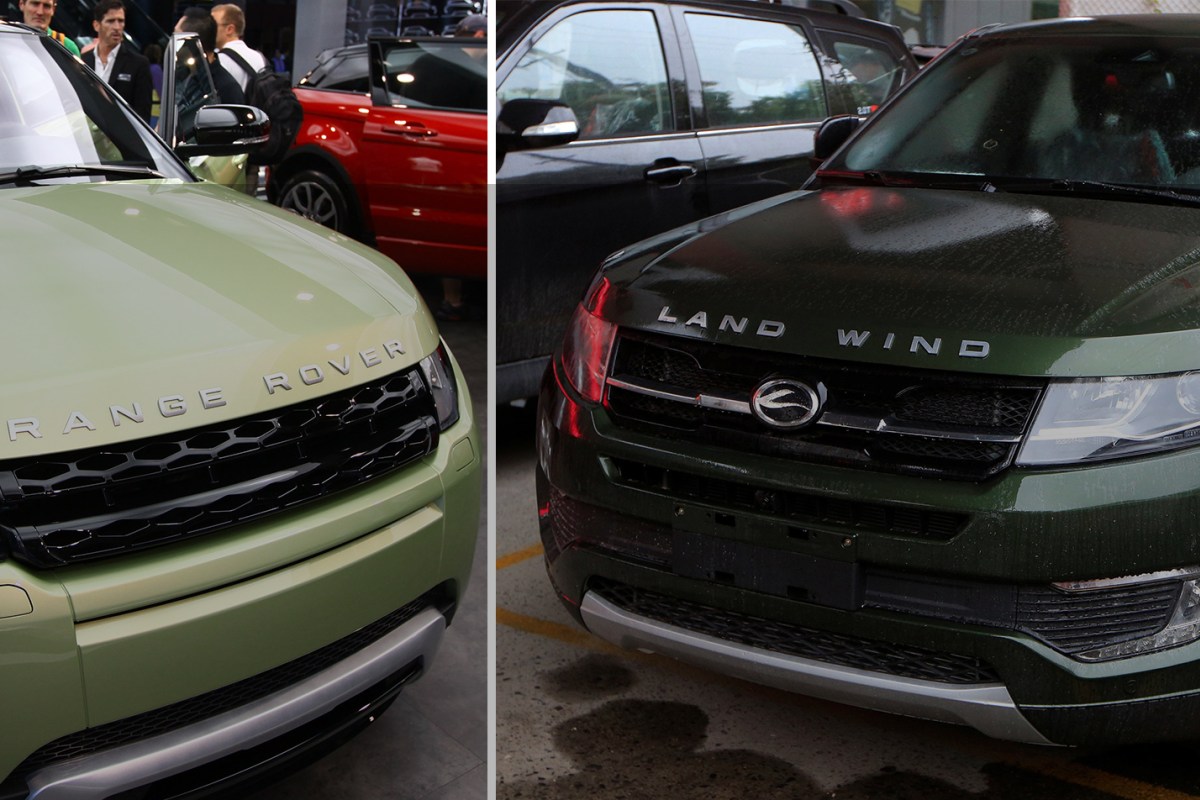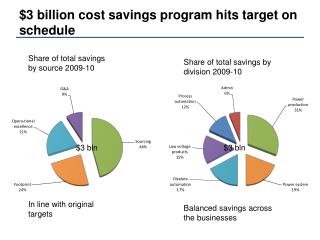Beyond BMW And Porsche: Analyzing Western Automakers' Struggles In China

Table of Contents
While BMW and Porsche enjoy relative success in the Chinese automotive market, the reality for many other Western automakers is far more challenging. This article delves into the significant hurdles faced by these companies, exploring the factors contributing to their struggles and outlining potential strategies for future success. The Chinese automotive market is complex, and understanding these challenges is crucial for any Western brand aiming for growth in this lucrative but competitive landscape. This analysis will look beyond the successes of luxury brands to reveal a more nuanced picture of Western automakers' struggles in China.
Intense Domestic Competition
The rise of powerful, innovative, and cost-effective Chinese auto brands like BYD, NIO, and Xpeng poses a significant threat to Western automakers. These domestic players possess several competitive advantages:
-
Superior understanding of local consumer preferences: Chinese brands are intimately familiar with the evolving tastes and needs of Chinese consumers, allowing them to tailor their products and marketing accordingly. They understand the importance of features valued by Chinese consumers, such as advanced technology and connectivity features.
-
Aggressive pricing strategies: Chinese automakers often offer highly competitive pricing, undercutting many Western brands, especially in the rapidly growing electric vehicle (EV) segment. This aggressive pricing strategy makes their vehicles more accessible to a broader range of consumers.
-
Rapid technological advancements, particularly in electric vehicles (EVs): Chinese companies are at the forefront of EV technology, consistently introducing innovative features and battery technologies. This rapid innovation surpasses many Western competitors in terms of both range and charging speed. The BYD Blade Battery, for example, has set a new benchmark.
-
Strong government support and subsidies: The Chinese government actively supports the domestic auto industry through subsidies, tax breaks, and favorable regulations, giving Chinese brands a significant advantage. These incentives accelerate the growth and competitiveness of domestic brands.
-
Extensive nationwide dealer and service networks: Chinese brands have established robust distribution and service networks across the country, ensuring convenient access for consumers. This widespread availability contrasts with the sometimes limited reach of Western automakers.
These combined advantages allow Chinese brands to effectively compete with, and often surpass, many Western counterparts. For instance, BYD's sales consistently outperform many established Western brands in various vehicle segments.
Navigating the Regulatory Landscape
The complex and ever-changing regulatory environment in China presents a major challenge for foreign automakers. These complexities impact operational costs and market access significantly:
-
Stringent emission standards and regulations related to fuel efficiency: China's increasingly strict environmental regulations necessitate significant investments in cleaner technologies and compliance measures for foreign automakers. Failure to meet these standards can result in hefty fines and market restrictions.
-
Bureaucratic hurdles and licensing procedures: Navigating the bureaucratic processes associated with obtaining licenses and approvals can be time-consuming and expensive for Western companies. This often involves navigating complex governmental agencies and procedures.
-
Data localization laws and cybersecurity concerns: China's data localization laws require companies to store sensitive data within the country, posing challenges for data security and management for Western automakers. Stringent cybersecurity regulations further increase the complexity of operations.
-
Tariffs and import duties: High tariffs and import duties on imported vehicles increase the cost of Western cars, making them less competitive compared to domestically produced vehicles. This price increase directly impacts market share and profitability.
-
Joint venture requirements (though easing): While regulations regarding joint ventures are easing, historically, foreign automakers were required to partner with Chinese companies to operate within the country. Even with relaxed requirements, navigating these partnerships presents unique challenges.
These regulatory hurdles significantly impact the profitability and market access of Western automakers in China.
Understanding Chinese Consumer Preferences
Chinese consumers have unique preferences and expectations that Western automakers often struggle to meet. These include:
-
Growing preference for electric vehicles and new energy vehicles (NEVs): The Chinese market is a global leader in EV adoption. Consumers increasingly favor electric vehicles over gasoline-powered cars, demanding advanced features and long driving ranges.
-
Emphasis on technological features and connectivity: Chinese consumers place a high value on advanced technology and connectivity features in their vehicles, expecting sophisticated infotainment systems and driver-assistance technologies.
-
Strong brand loyalty towards domestic brands: Chinese consumers often exhibit strong loyalty to domestic brands, particularly those that have successfully established trust and brand recognition within the market. Overcoming this brand loyalty is a major challenge for Western automakers.
-
Preference for larger vehicles and SUVs: Demand for larger vehicles, particularly SUVs, is high in the Chinese market, reflecting changing lifestyle preferences and family needs. Western automakers need to cater to this demand by offering appropriately sized vehicles.
-
Importance of social media marketing and online engagement: Social media plays a crucial role in marketing and consumer engagement in China. Western automakers must effectively leverage social media platforms to reach Chinese consumers.
Understanding these nuances is vital for adapting marketing and product strategies effectively.
Supply Chain Disruptions and Logistics
The COVID-19 pandemic and geopolitical factors have disrupted global supply chains, negatively impacting the production and delivery of vehicles in China:
-
Microchip shortages and other component constraints: Global microchip shortages and other supply chain disruptions have significantly impacted vehicle production in China, leading to delays and production cuts.
-
Port congestion and transportation delays: Port congestion and logistical bottlenecks have further exacerbated the challenges faced by Western automakers, delaying the delivery of both components and finished vehicles.
-
Increased costs of raw materials and logistics: Disruptions to global supply chains have led to increased costs for raw materials and logistics, impacting the profitability of vehicle production and distribution.
-
Dependence on global supply chains versus localized production: A reliance on global supply chains makes Western automakers more vulnerable to disruptions compared to those with more localized sourcing.
These disruptions necessitate increased resilience and diversification of supply chains.
Conclusion
The Chinese automotive market presents both immense opportunities and significant challenges for Western automakers. While brands like BMW and Porsche have found success, the struggles of many others highlight the need for a deep understanding of the local market, including intense domestic competition, complex regulations, evolving consumer preferences, and supply chain vulnerabilities. Successfully navigating these complexities requires strategic adaptation, including localization efforts, investment in technology, and a strong focus on meeting the unique demands of the Chinese consumer. To thrive in this dynamic landscape, Western automakers must move beyond simply exporting their existing models and instead develop tailored strategies to conquer the complexities of the Chinese automotive market—understanding that success in China requires more than just a well-known brand name. Analyzing the struggles of Western automakers in China is a crucial first step towards achieving success in this important market.

Featured Posts
-
 Discovering The Countrys Next Big Business Areas
May 11, 2025
Discovering The Countrys Next Big Business Areas
May 11, 2025 -
 Improved Asylum Shelter Management E1 Billion Cost Savings Potential
May 11, 2025
Improved Asylum Shelter Management E1 Billion Cost Savings Potential
May 11, 2025 -
 Selena Gomez And Benny Blanco Separating Fact From Fiction In The Recent Cheating Scandal
May 11, 2025
Selena Gomez And Benny Blanco Separating Fact From Fiction In The Recent Cheating Scandal
May 11, 2025 -
 Jessica Simpsons Controversial Snake Sperm Comments A Deep Dive
May 11, 2025
Jessica Simpsons Controversial Snake Sperm Comments A Deep Dive
May 11, 2025 -
 Videoto Na Okikj I Khart Mislev Deka Si Nechie Dete
May 11, 2025
Videoto Na Okikj I Khart Mislev Deka Si Nechie Dete
May 11, 2025
